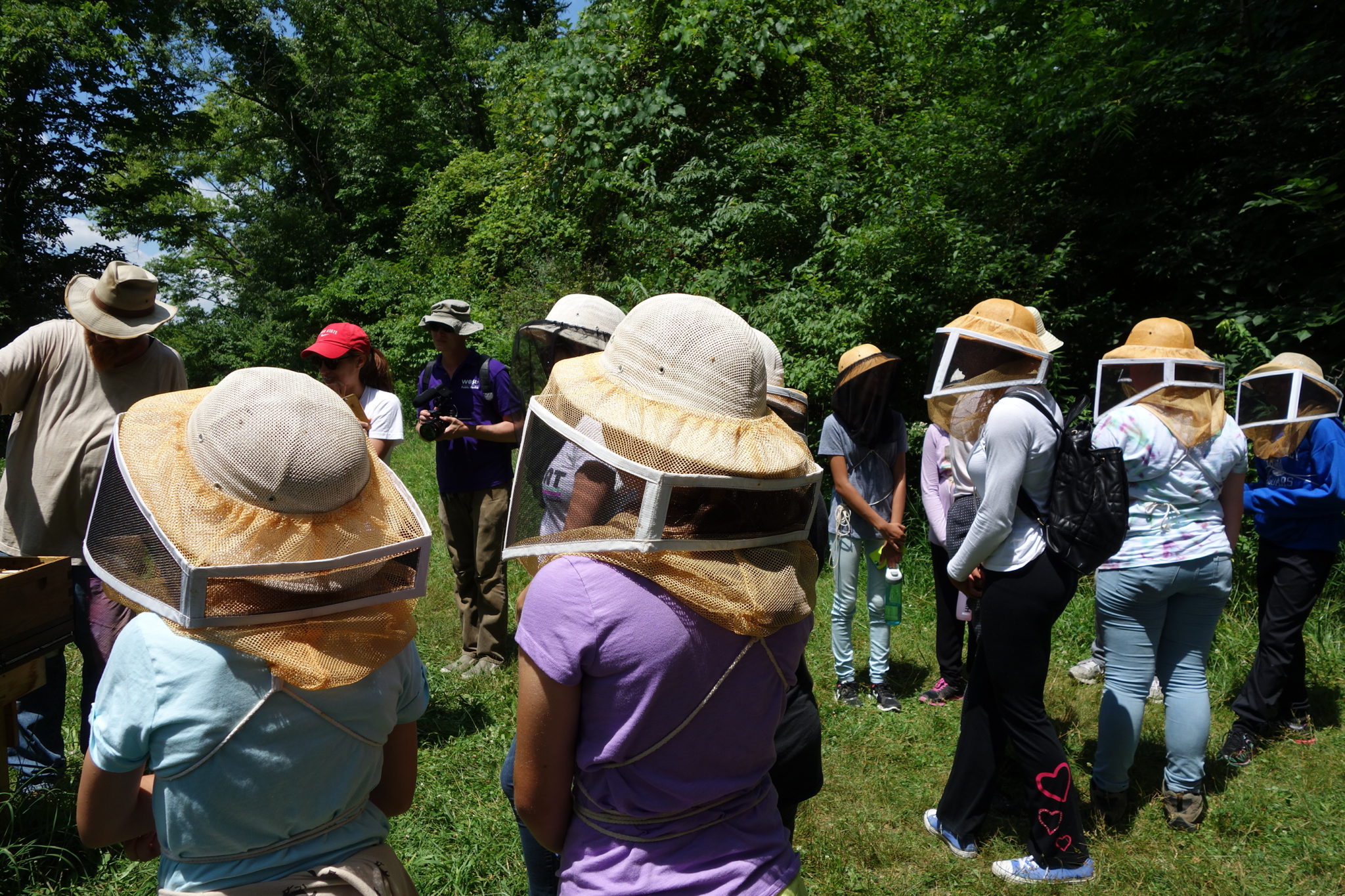This summer, we’re publishing a short series on STEM in the summer, with visits to three STEM programs for girls. Sign up here to read the rest.
“I can remember sitting at my computer that first day, and we moved a ladybug across the screen, like we still do. And I can remember that light bulb moment of – this is exactly what I want to do with my life.”
Former student Riley Patrick reflects on her experience in Ohio State’s digital animation mentoring program for young women. Now in college, she mentors three middle school girls through the same two-week project.

Maria Palazzi, Director of the Advanced Computing Center for the Arts and Design, founded the program in 2001. Each year, 15 young women are challenged to create a digitally animated narrative around an ecological theme. This year, they focus on bees. They even stop by the Stratford Ecological Center to examine hives up close, in full beekeeping garb.
“I think that we try really hard to empower the girls who are here to make them feel independent and to make them feel like they have a big say in everything they’re doing,” says Palazzi. She seeds them with questions, but allows them to find their own way. The program isn’t “just learning about a piece of technology or piece of software,” she says. “It’s really being an artist and trying to find your voice.”
Gabriella Anthony, one of Patrick’s students, explains her task that day.
“So right now, I’m trying to put in perspective what it would look like in a bee’s eye if it saw a person.” She gestures to the modeling program onscreen. “I’m just trying to put it in perspective, using this person farther away, then putting this shape, which is like a cylinder with a hole in the middle, behind the person.”
“Is that okay?” she asks, kindly giving me time to catch up.
As Gabriella demonstrates, the program emphasizes collaboration and communication just as much as technical know-how. On any large-scale animation project, teamwork is essential to the outcome. “You’re not only leaning on your neighbor,” says her mentor, “but you’re learning from your neighbor.” In an environment of inclusivity and collaboration for young women, students rise to the two-week challenge.

Palazzi happily admits she was “lucky enough to work with Chuck Csuri,” digital art pioneer and founder of the center, through her undergrad and graduate career. “It was unlike any experience I ever had,” she says. “There weren’t very many women at that point, but it was very collaborative. It was people from art disciplines to science disciplines, everybody working towards the same goal but all of our expertise being elevated in some way by working together and making things we couldn’t have made alone.”
Palazzi carries on a tradition, “to create a place where we have a community that feels the same way about making and creating and exploring.”
“It’s an honor to do it.”
For more information on this yearly program, visit the ACCAD website.
Interviews took place on July 8th and 18th. Written by Sam Bodary for Battelle Education.